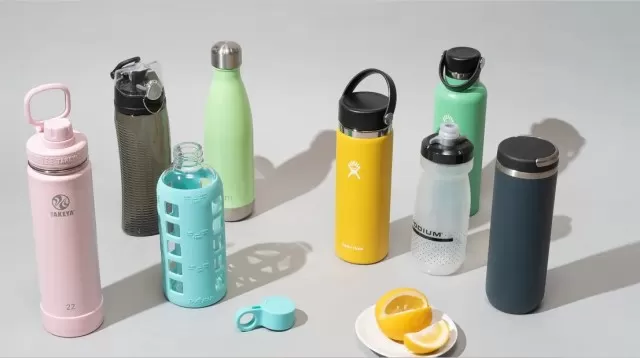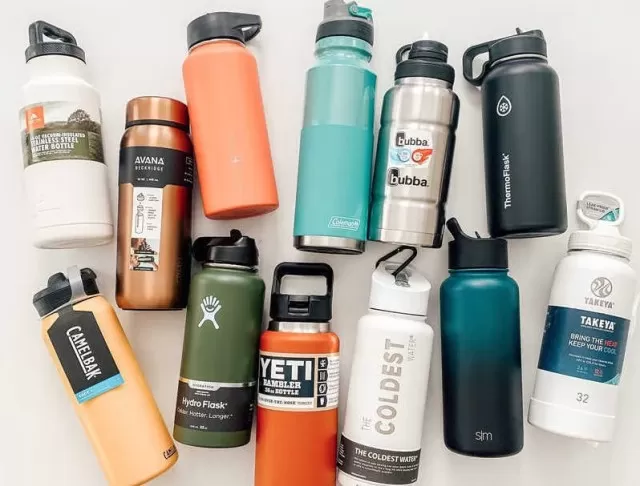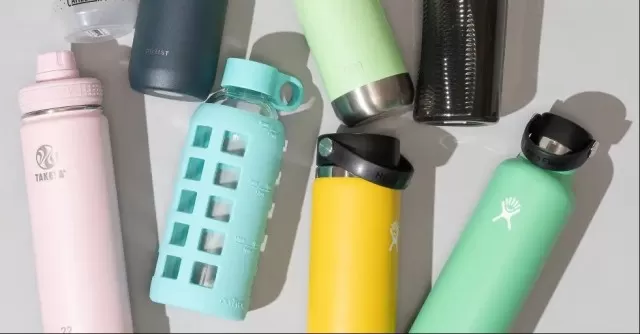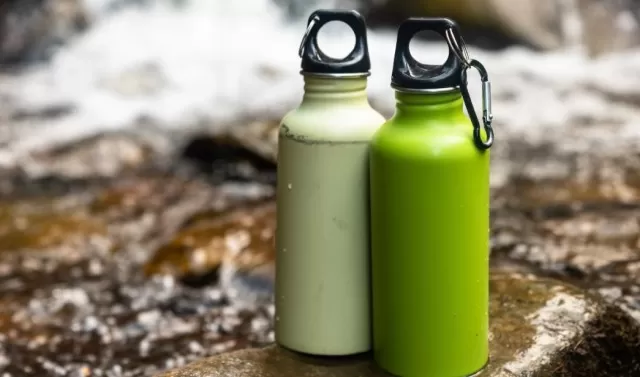Water bottles accompany you to various places like the gym, your desk, the grocery store, and even on daily dog walks.
It might have your favorite color and keep your ice water cold for hours, but it can also become a breeding ground for bacteria, residue, and even mold.
With the wide variety of reusable water bottles available, it can sometimes be confusing to know the best way to clean them.
Experts recommend washing your water bottle after each use.
According to research conducted by Treadmill Reviews, athletes’ water bottles have an average of 313,499 colony-forming units (CFU) per square centimeter. In comparison, the average pet toy only has 2,937 CFU per square centimeter.
That’s a significant amount of germs. Additionally, any warm and damp environment is conducive to mold growth.
To ensure you’re drinking from a safe and clean vessel, take a look at our tips on how to clean a water bottle.
3 Effective Methods for Cleaning Water Bottles

While some water bottles are dishwasher safe and can be easily cleaned that way, others require alternative methods to ensure proper hygiene.
If your water bottle is not suitable for the dishwasher, you can use these commonly available cleaning agents to get the job done effectively.
Method 1: Cleaning with Liquid Dish Soap
For regular cleaning, warm, Soapy Water is sufficient.
- Fill the empty water bottle with hot water and add a few drops of liquid dish soap.
- Secure the cap tightly and shake the bottle vigorously to create soapy suds inside.
- Discard the soapy water and use a bottle scrub brush to reach the bottom, as well as clean the exterior and base of the bottle.
- Rinse the water bottle thoroughly with warm water until no soap bubbles remain, and then allow it to dry completely.
- Scrub the lid both inside and out, paying extra attention to the spout opening or mouthpiece. Rinse it thoroughly and let it dry.

Method 2: Cleaning with Distilled White Vinegar
Vinegar is a versatile and effective cleaning agent.
Fill the water bottle halfway with equal parts distilled white vinegar and water.
Secure the cap tightly and shake the bottle to ensure thorough mixing, then let it sit with the vinegar solution overnight. The next day, rinse the bottle and lid with warm water to remove any residual vinegar and allow them to dry completely.
This method is particularly useful for cleaning stainless steel water bottles.
Method 3: Cleaning with baking soda and Bleach
For stubborn grime and mildew, a combination of baking soda and bleach can be effective.
Mix a teaspoon of bleach with a teaspoon of baking soda inside the water bottle.
Fill the rest of the bottle with water. Use this solution to scrub the cap, both inside and out.
Let the water bottle sit overnight, and in the morning, rinse it thoroughly with warm water. Allow it to dry completely.
If your water bottle is dishwasher safe, running it through a cycle is recommended.
Cleaning Water Bottle Lids and Special Cases

Some water bottles come with additional features such as built-in straws or insulated double-wall interiors, which require specific cleaning methods.
Cleaning a Water Bottle with a Bite Valve:
- Remove the soft plastic bite valve from the lid.
- Place all removable components in the dishwasher for cleaning.
- Use warm, soapy water and a cotton swab or straw brush to clean the bite valve thoroughly.
- Ensure that all parts are completely dry before reassembling.

Cleaning a Tumbler with a Straw:
Most tumblers can be cleaned using the methods mentioned above or by running them in the dishwasher.
However, reusable straws require special care. Use straw brushes for thorough cleaning.
Rinse the straw with warm water, apply a small amount of dish soap to the brush, and scrub the interior and exterior of the straw. If necessary, baking soda can be added to act as an abrasive.
Cleaning a Travel Mug:
If your travel mug is dishwasher safe, place it on the top rack for cleaning.
However, if it is insulated, hand washing is recommended. Remove the rubber seal around the base of the lid and scrub it with warm, soapy water to ensure cleanliness.
Pay close attention to all areas of the lid, as they can be prone to mold growth.
*The information is for reference only.